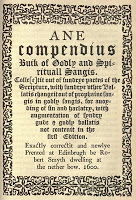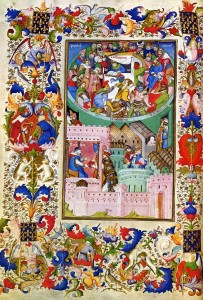Whether David Lindsay can accurately be described as a Reformer or not seems to be a matter of some contention for critics and historians. For Joanne Kantrowitz, Lindsay is a Reformer, while Carol Edington errs on the side of caution when assessing his position, noting Lindsay’s connection to Reformers at the court but falling short of numbering him among them. For Edington, Lindsay is a reformer with a small ‘r’, outraged by clerical abuses and yet steering clear of doctrinal matters in his literary works.
What has struck me as interesting in my reading today is how Lindsay manages to criticise the Catholic clergy in 1540 in a way which enabled James V to exhort the Bishop of Glasgow to “reform their factions and manners of living”, when other playwrights of the 1530s were punished for the same thing. In his section on ‘Performances and Plays’ in The Edinburgh History of Scottish Literature, Volume One (2007), Bill Findlay relays that:
In 1535, John Kyllour, a Dominican friar, wrote a Historye of Christis Passioun, performed in the Castlehill playfield, Stirling, before James V, his court, and the townspeople. Kyllour employed the format of the passion play to criticise bishops and priests; for this, after a period as a hunted man, he was burned at the stake in 1539. James Wedderburn of Dundee wrote, and had performed there about 1540, plays which satirised the Roman Catholic clergy: a ‘tragedie’, Beheading of Johne the Baptist, and a ‘comedie’, Historie of Dyonisius the Tyranne. For these, he had to flee into exile in France. (p255-6)
How is it that Lindsay is not only able to attack the clergy, but has his play used as springboard for James to do the same, while contemporary dramatists suffer exile and execution for doing so? Sadly, because neither Kyllour or Wedderburn’s texts survive, we will never be able to assess the qualitative differences between the forms and extent of reformation they advocate and how these differ from those that might have been suggested by Lindsay, if, indeed, Lindsay’s critique in the non-extent Interlude of 1540 bore any relation to that found in the Satyre of the 1550s. It does seem astonishing that Lindsay’s attack on prelates and the “naughtiness in Religion” should have been sustained and vehement enough to justify James V’s response, while Kyllour and Wedderburn suffered such a fearful fate for their reforming ideals.








